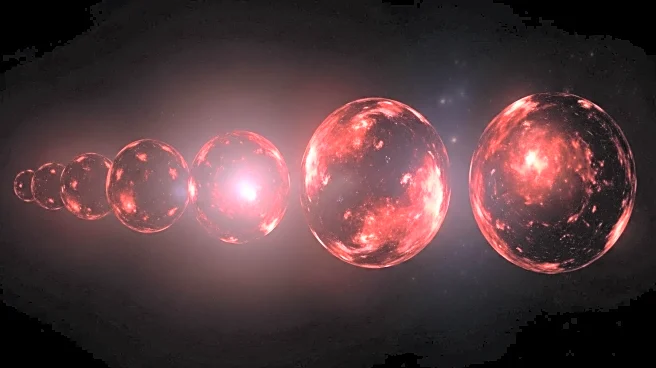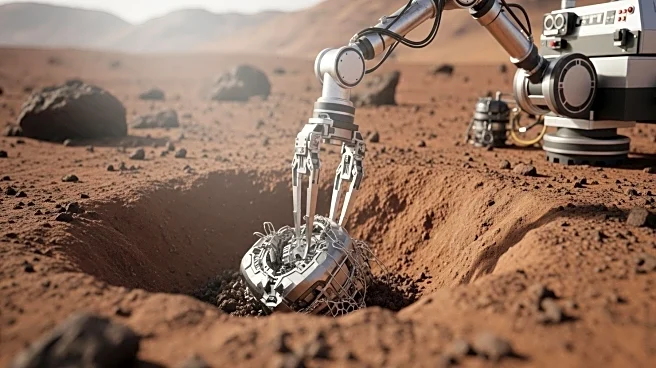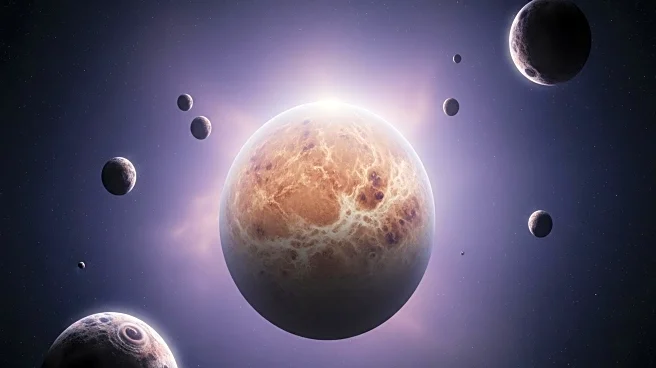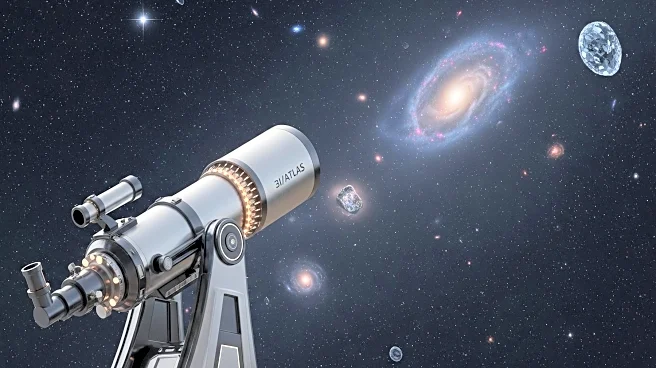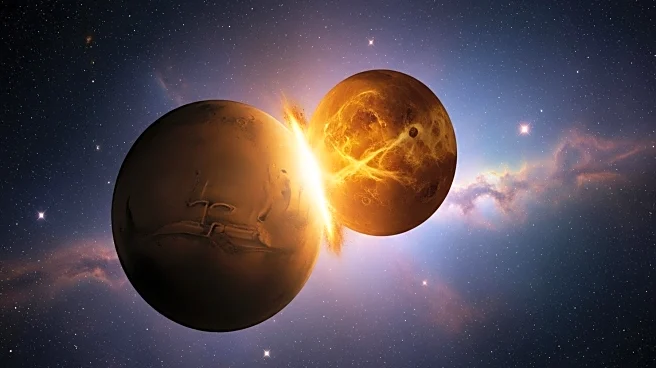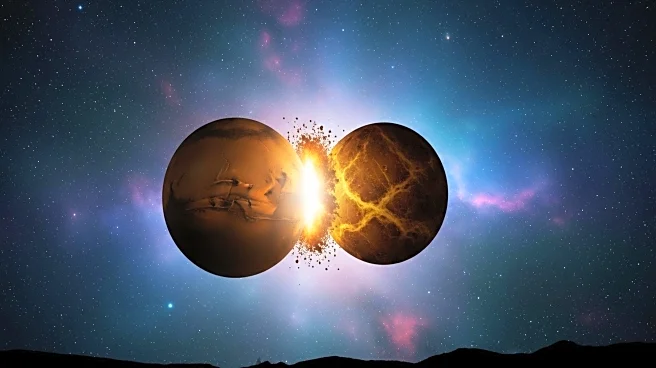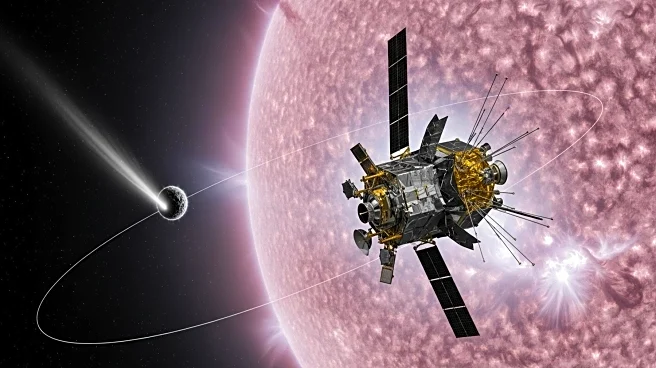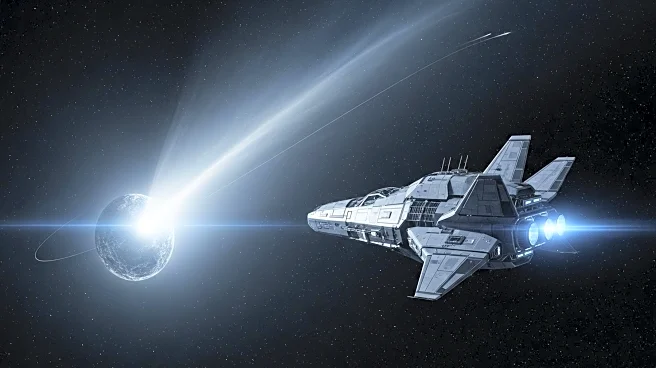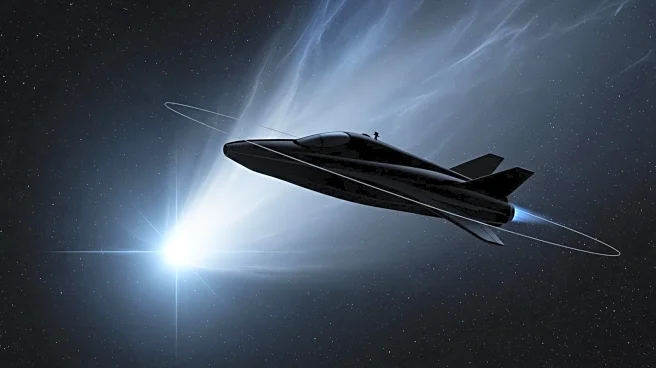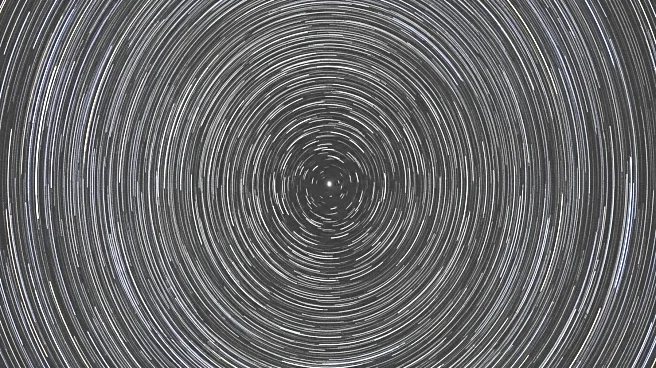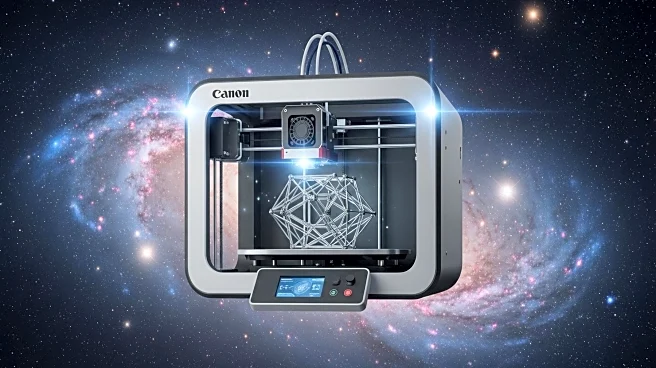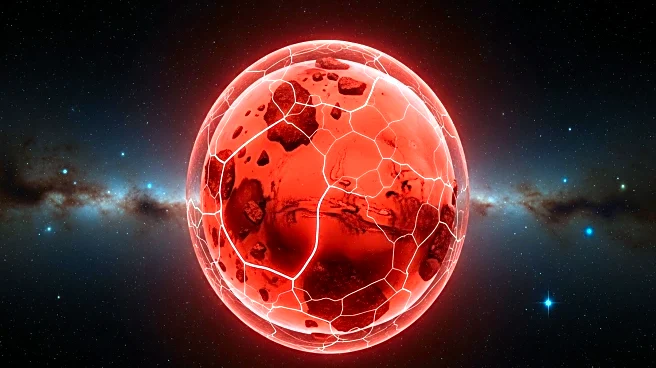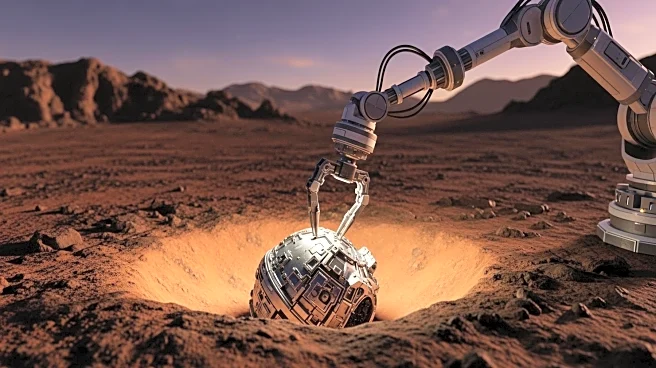What is the story about?
What's Happening?
Researchers have discovered several dense blobs within Mars, believed to be remnants of ancient protoplanets from giant impacts up to 4.5 billion years ago. These structures, preserved within Mars' mantle, were identified using Marsquake data collected by NASA's InSight lander. The study, published in the journal Science, reveals that these blobs are much denser than surrounding material, suggesting they originated from massive impacts during the early solar system.
Why It's Important?
The discovery of these blobs provides new insights into Mars' geological history and the early solar system. Understanding the composition and origin of these structures can shed light on the processes that shaped Mars and other planets. This research highlights the differences between Mars and Earth, particularly in terms of tectonic activity and mantle evolution. The findings could inform future studies on planetary formation and the impact of protoplanets on solar system development.
Beyond the Headlines
The presence of these ancient structures suggests Mars' mantle has evolved slowly over billions of years, unlike Earth's dynamic tectonic activity. This discovery emphasizes the unique geological characteristics of Mars and its potential to preserve ancient features. The study also demonstrates the effectiveness of using Marsquake data to explore the planet's interior, offering a new method for planetary research.
AI Generated Content
Do you find this article useful?
